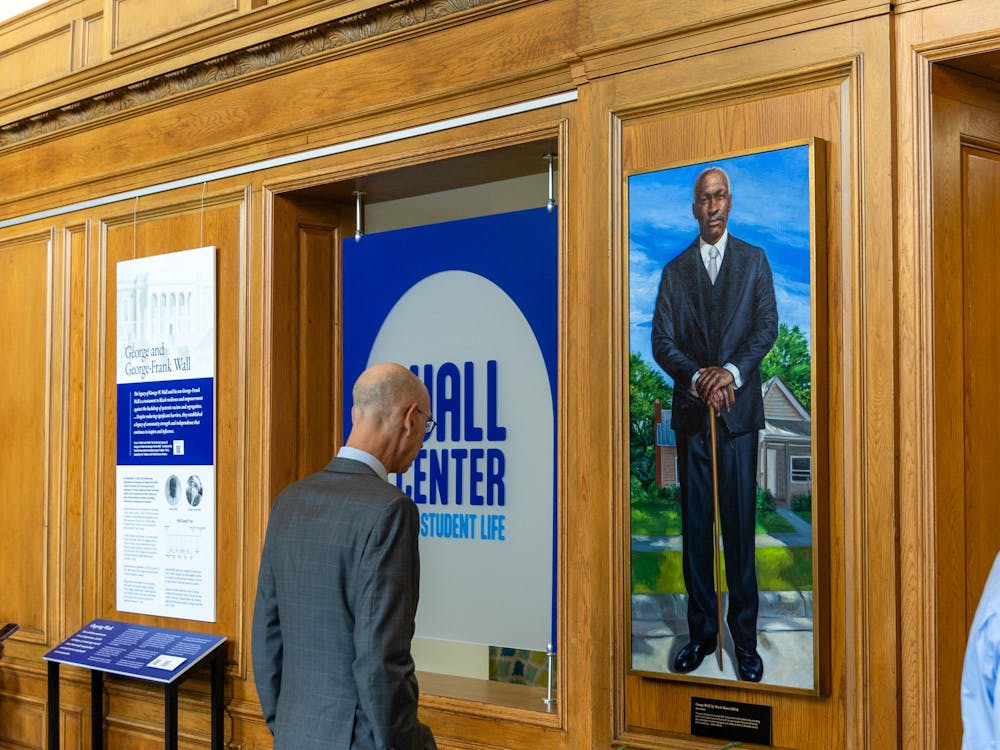Duke hosted an event dedicating the George and George-Frank Wall Center for Student Life Friday as part of the University’s Founder’s Day Centennial Celebration Weekend.
Members of the Wall family, officials from the City of Durham and Duke students and staff gathered to witness the recognition of the two former University employees.
“Naming [the building] in honor of the Walls is a way to acknowledge their work and influence, as well as the broad community of Duke staff members — including dining staff, housekeepers, groundskeepers, facilities team members and transportation staff whose work is crucial [and] absolutely crucial to our campus operations,” said President Vincent Price.
A permanent art exhibition, which features portraits of George and George-Frank Wall, has been installed in the Wall Center for Student Life, where first-year students are reminded of the contributions of figures like the Walls to the Duke-Durham community.
The program opened with a welcome speech from Price followed by an introduction by Stelfanie Williams, vice president for community affairs. Three members of the Wall family, Stephanie Joy Tisdale, Vanessa Wall Smart and Talib Graves-Manns, remarked on their family history and the pivotal roles of George and George-Frank Wall in the Duke-Durham community. Adam Silver, chair of the Board of Trustees, concluded the ceremony.
“[George and George-Frank Wall] were not just living for themselves, but they were living for the future,” Graves-Manns, George Wall’s great-great-great-grandson, said. “This $100 investment has created value that is incalculable.”
George Wall was born into enslavement in Randolph County in 1861. In 1880, George approached Braxton Craven, then-president of Trinity College in Randolph County, and worked first as a laborer and then as a custodian for the college.
The oldest of George Wall’s 14 children, George-Frank Wall also worked as a custodian at Trinity — and later at Duke — creating lasting relationships with the community. In his 1946 will, George-Frank left $100 to the University, though Duke did not admit Black students until nearly two decades after his death.
When George and his family relocated to Durham, they established a close-knit community for other working-class Black families living nearby, laying the foundations for the neighborhood later known as Walltown. Today, the University’s connection with Durham continues through the Duke-Durham Neighborhood Partnership.
Get The Chronicle straight to your inbox
Sign up for our weekly newsletter. Cancel at any time.

